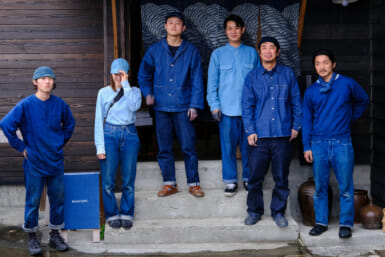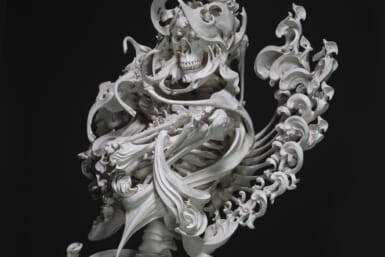by Fred Harris
Umehara Ryuzaburo (1888-1986)
How does one evaluate an artist who is practically unknown outside Japan, lived almost a complete century, studied with Renoir and whose pictures two years ago when he was still alive were valued at $30,000 per point (a point is roughly the size of a postcard)?
In Japan he is a household word. His paintings outsell Picasso, yet most of the foreign residents living in our fair city don’t know anything about him. If they did. they probably would be bewildered as to why this art hi is so highly valued.
I have to admit it took me a long time to appreciate Umehara Ryuzaburo. It was only through constant exposure, familiarity with Japanese aesthetics and an understanding of the historical context to which Umehara fits that I was able to understand, accept and, in some cases, even enjoy his work.
Umehara was born in Kyoto just as Japan was emerging from its isolationist cocoon. This important link with the past is an integral part of our understanding of Umehara’s work. He began his art schooling in Asai Chu’s studio. Asai was the first western-style artist in Japan to fully understand European traditions. He was instrumental in arranging an exhibit of 80 European paintings shown in Ueno in 1890. This exhibition included the work of Millet and Degas. Umehara’s attraction to Renoir is understandable when we realize that the Japanese were already exposed to fresh European artistic movements as early as 1890.
During a trip to France in 1908, Umehara saw Renoir’s paintings for the first time illustrated in an art book. The Luxembourg museum had Renoir’s paintings on exhibit, and young Umehara was able to absorb at first-hand the rich, full surface qualities of this French master.
To quote Umehara from his journal Memories of Renoir, “I cried out in my mind that this was the kind of painting I had been yearning for, dreaming of and wishing to produce myself.”
After almost a year of searching out every Renoir painting available for viewing, he finally worked up enough courage to call on the master at his studio in Cagnes. Without an introduction, Umehara tried the same approach many foreigners try here: “I came a long distance, all the way from Japan, just to see you.” This approach usually opens doors for foreigners anywhere: it also opened Renoir’s door for Umehara.
A close relationship developed between this grey old Frenchman and the spirited young Japanese. Umehara stayed in France five years absorbing everything he could, not only from Renoir directly, but from also studying the pictures of Cezanne. Through these efforts a distinct sensibility developed. At first viewing, the appearance seems derivative of Renoir and the Fauvist, Matisse, but after a period of familiarity there is a realization of something different; something definitely Japanese.
Umehara went so far as to emulate Renoir’s palette by restricting his color range to the exact 11 hues that were used by Renoir. Umehara returned to Japan to pursue a productive, but relatively isolated, existence. Searching for something which was honest to himself, he wrote: “I believe that the firm main road for our art lies not in pursuing the superficial novelty, but in expressing the fresh aesthetic impression in a straightforward but refined style.” He wanted to return to a traditional Japanese aesthetic sensibility.
This is the most difficult aspect of Umehara’s work to understand. The Japanese aesthetic which he relates to is not what we commonly understand. To perhaps imagine a mind confronting a new world of visual images, to keep it fresh while penetrating the root of the image, with a sharp, very traditional branch from a completely different tree.
Umehara eventually achieved a level of success in Japan bordering on hero worship. The western art world, however, was never able to bridge the cultural gap. In the recent issue of Art in America magazine an article reviewed an exhibit of the western style painters of the Meiji-Taisho era (“Paris in Japan: The Japanese Encounter with European Painting“). The reviewer’s attitude was obviously patronislic, with such comments as, ‘The pictures in the show are mostly pastiches of Modernist masters…” It does admit to an uncomfortable feeling by stating “how could the Japanese abandon their rich artistic heritage?” The article ends with the statement, “Following World War II, westernization recommenced apace. But despite making major contributions to world cinema, architecture and design, the Japanese have yet to become an international force in oil painting.”
These same opinions are still voiced against America by the French and were directed against the Germans by the Italians during the 15th century. It is only when one understands the total context of a national tradition and character that full appreciation of art can be realized.









